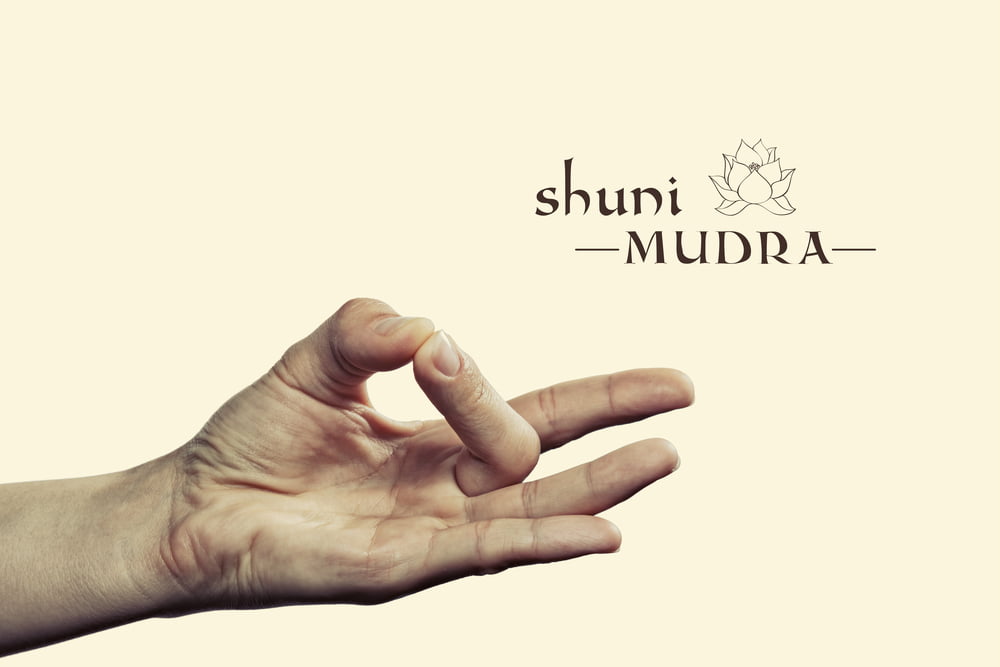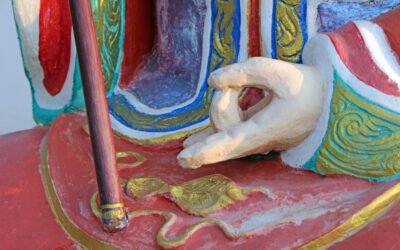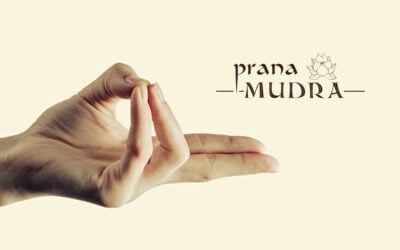Shuni Mudra is a popular hand gesture used in yoga and meditation practices. It is a powerful technique that can bring numerous benefits to the mind, body & spirit. This mudra also known as the gesture of patience is believed to help in balancing the energy within the body, promoting focus & enhancing mental clarity. In addition to its positive effects, it is essential to be aware of the potential side effects and precautions associated with practicing Shuni Mudra. This article will delve into the various benefits of this mudra, any potential side effects to keep in mind, the correct technique to perform it & necessary precautions to ensure a safe practice. Whether you are a beginner or an experienced practitioner, understanding the intricacies of Shuni Mudra will enable you to optimize its effects & incorporate it into your daily routine effectively.
benefits of Shuni Mudra.
1. Improve Concentration.
One of the primary benefits of Shuni Mudra is its ability to enhance concentration & focus. By creating a connection between the middle finger & the thumb, this mudra helps to stimulate the brain and improve mental clarity. It is particularly useful for those who struggle with scattered thoughts or have difficulty staying attentive.
2. Patience & Discipline.
As the “seal of patience,” Shuni Mudra helps to cultivate a sense of calmness and patience within oneself.
It encourages individuals to be more disciplined & composed, even in challenging situations. Regular practice of this mudra can assist in developing resilience & the ability to handle stress with equanimity.
3. Wisdom and Intuition.
Shuni Mudra is also associated with wisdom & intuition. By combining the elements of the earth (middle finger) and the fire (thumb), this mudra is believed to stimulate the flow of energy throughout the body, leading to enhanced insight & intuition. It is often used during meditation to connect with one’s inner wisdom & deepen spiritual awareness.
4. Balancing Energy.
This mudra is known to balance the elements within the body, particularly the earth and fire elements. By harmonizing these energies, Shuni Mudra can help restore equilibrium and promote overall well-being. It is especially beneficial for individuals who feel imbalanced or overwhelmed.
5. Digestive Health.

Shuni Mudra is believed to have a positive impact on digestion & metabolism. By activating the fire element within the body this mudra assists in improving digestion, absorption of nutrients & elimination of waste. It can be particularly helpful for individuals dealing with digestive issues such as bloating or constipation.
6. Stress Relief.

Practicing Shuni Mudra can aid in reducing stress & anxiety levels. As it promotes a sense of calmness and patience, this mudra helps to quiet the mind & release tension from the body. It can be used as a tool to manage stress & promote relaxation.
| 💡 Tips FreakToFit.com Incorporating Shuni Mudra into one’s yoga or meditation practice can offer a multitude of benefits for physical, mental & spiritual wellbeing. Whether seeking improved focus, inner wisdom or overall balance, the regular practice of this mudra can be a valuable addition to one’s wellness routine. |
Side Effects of Shuni Mudra.
While it is generally considered safe & beneficial, like any other practice, it is essential to be aware of following potential side effects that may arise from its practice:
1. Hand discomfort.
One possible side effect of practicing Shuni Mudra is hand discomfort or strain. As this mudra involves a specific positioning of the fingers, individuals with hand or finger related conditions such as arthritis, carpal tunnel syndrome or tendonitis may experience discomfort or pain during or after the practice.
It is crucial for individuals with such conditions to modify the hand position or consult with a healthcare professional before practicing Shuni Mudra.
2. Muscle fatigue.
Engaging in Shuni Mudra for an extended period might lead to muscle fatigue in the hand & forearm. Holding the hand gesture for an extended time without proper breaks or rest can strain the muscles involved.
Practitioners are advised to listen to their bodies and take breaks when necessary to prevent excessive muscle fatigue.
3. Emotional release.
Shuni Mudra is believed to have a grounding & calming effect on the mind and emotions. While this can be beneficial, it may also lead to unexpected emotional releases during the practice. Some individuals may experience feelings of sadness, anger or frustration as emotional blockages are released.
It is important to approach these emotions with compassion & understanding, allowing oneself to process and release them in a healthy way.
4. Dizziness or lightheadedness.
In some cases, individuals may experience dizziness or lightheadedness during or after practicing Shuni Mudra. This can occur due to the deep relaxation & increased blood flow to the head that can result from the practice.
If these sensations persist or become severe, it is advisable to discontinue the practice and seek medical attention if necessary.
5. Spiritual & energetic shifts.
Shuni Mudra is believed to have a profound impact on the energetic & spiritual aspects of an individual. While this can be a positive & transformative experience, it may also bring about unexpected shifts or changes in one’s spiritual journey.
Some individuals may find themselves questioning beliefs or experiencing heightened sensitivity to energy. It is important to approach these shifts with an open mind & seek support from experienced practitioners or spiritual teachers if needed.
| 💡 Tips FreakToFit.com While Shuni Mudra is generally considered safe, individuals should be aware of potential side effects that may arise from its practice. It is advisable to approach the practice with mindfulness, listen to one’s body, and seek guidance from qualified instructors if necessary. |
How To Do Shuni Mudra?
To perform the Shuni Mudra, follow these steps:
1. Find a comfortable seated position, either on the floor or on a chair, with your spine erect & your shoulders relaxed.
2. Bring your hands in front of your chest, palms facing up.
3. Join the tip of your middle finger with the tip of your thumb, applying gentle pressure to create a connection between these two fingers.
4. Extend your other three fingers straight & relaxed. Keep them together as much as possible, without any tension.
5. Rest your hands on your thighs or knees, depending on your seated position, while keeping your elbows slightly bent.
6. Close your eyes or soften your gaze & take a few deep breaths to settle into the mudra.
7. As you hold the Shuni Mudra bring your attention to your breath & allow yourself to become aware of any sensations or thoughts that arise.
8. You can practice this mudra for a few minutes to several minutes, depending on your comfort level and time availability. It is recommended to start with a shorter duration & gradually increase it as you become more familiar and comfortable with the practice.
| 💡 Tips FreakToFit.com Remember, the key to experiencing the benefits of Shuni Mudra lies in regular practice and a calm, focused mind. Consistency is essential to deepen your connection with this mudra and harness its transformative qualities. |
Precautions During Shuni Mudra.
This mudra holds numerous benefits for the mind, body and spirit but like any other yoga technique, it is important to practice it with caution & awareness. Here are some key precautions to consider while performing Shuni Mudra:
1. Physical Alignment.
Before practicing Shuni Mudra, ensure that your body is properly aligned. Sit in a comfortable posture with a straight spine, shoulders relaxed & chin slightly tucked in. Maintaining a good posture throughout the practice will prevent any unnecessary strain on your body.
2. Breath Awareness.
While performing Shuni Mudra pay attention to your breath. Maintain a slow, steady & relaxed breath to enhance the effectiveness of the mudra. Avoid holding your breath or breathing rapidly, as it may disrupt the flow of energy in your body.
3. Gradual Progression.
As with any new practice, it is important to start slowly & gradually increase the duration and intensity. Begin by practicing Shuni Mudra for a few minutes and gradually extend the time as your body & mind become more accustomed to it. Do not push yourself beyond your limits, as it may lead to discomfort or strain.
4. Individual Differences.
Understand that every individual is unique & what works for one person may not work for another. Listen to your body and respect its limitations. If you experience any pain, discomfort or unusual sensations while practicing Shuni Mudra, modify the technique or consult a qualified yoga instructor for guidance.
5. Mental State.
It is important to approach Shuni Mudra with a calm & focused mindset. Avoid practicing it when you are feeling mentally or emotionally overwhelmed as it may amplify those feelings. Instead, find a peaceful and quiet environment where you can fully immerse yourself in the practice.
6. Medical Conditions.
If you have any pre existing medical conditions or injuries, it is advisable to consult a healthcare professional before incorporating Shuni Mudra into your routine. They can provide personalized guidance based on your specific needs & ensure that the practice aligns with your overall wellbeing.
| 💡 Tips FreakToFit.com Remember, Shuni Mudra, like any other yoga technique is a tool to support your journey towards self awareness & inner peace. Practice it mindfully, respecting your body’s needs & enjoy the transformative benefits it can bring to your life. |
My Personal Experience with Shuni Mudra.
Shuni Mudra is a hand gesture that I have personally experienced and found to be incredibly calming and grounding. When I first started practicing yoga, I was introduced to this mudra & was amazed by its effects.
By simply touching the tip of my middle finger to the tip of my thumb, I found a sense of inner peace & stillness wash over me. It helped me to focus my mind and release any tension or anxiety that I may have been holding onto.
This mudra has become a regular part of my practice & I have found that it not only enhances my meditation and yoga sessions but also brings a sense of balance and tranquility into my daily life.
Overall, my personal experience with Shuni Mudra has been nothing short of transformative & I highly recommend it to anyone seeking to find a deeper connection with themselves and the present moment.
Bottom Line.
The Shuni Mudra is a powerful hand gesture in yoga & meditation practices that can bring about numerous benefits. By joining the tip of the middle finger with the thumb, this mudra is believed to enhance concentration, focus & memory. It also helps to calm the mind, reduce stress & anxiety and promote feelings of clarity & tranquility. Additionally, the Shuni Mudra is said to stimulate the brain and nervous system, promoting mental alertness and enhancing cognitive abilities. Regular practice of this mudra can lead to improved mental & emotional wellbeing, making it a valuable tool for individuals seeking to enhance their overall mental performance & inner peace.
How we reviewed this article:
Our team of experts is always monitoring the health and wellness field, ensuring that our articles are updated promptly as new information emerges. See Our Editorial Process
May 23, 2025
Written By: Uttam
Reviewed By: Inga Grebeniuk-Gillyer
Written By: Uttam
Reviewed By: Inga Grebeniuk-Gillyer

 Workout
Workout

 Meditation
Meditation






 Podcast
Podcast
 E-book
E-book














